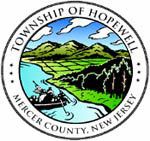By Frank Mustac, Special Writer
Township officials recently introduced an ordinance that will set the redevelopment of the former Pennytown property in motion.
Voted on during the July 25 Township Committee meeting, the ordinance proposes that the township work to restore the property to a more productive state while preserving and resuing the historic single-family residence on the property that is part of the hamlet of Marshall’s Corner.
The township will also be charged with preserving the pond and stream corridor along the Stony Brook Branch.
Mayor Kevin Kuchinski and committee members John Hart, Todd Brant and Julie Blake voted in favor of the redevelopment plan, with Deputy Mayor Vanessa Sandom being the sole dissenting vote.
Located at the junction of route 31 and 654, the 25-acre property was purchased in 2008 for $6.65 million. At the time, the township acquired the land with the intent to use it to meet its affordable housing obligation.
Last year, however, officials said a reduction in the number of affordable housing units needed to meet state requirements meant the land was no longer needed for that purpose.
The redevelopment plan, prepared by Brian M. Slaugh of the firm Clarke Caton Hintz in Trenton, was undertaken with the objective that Hopewell Township will now sell the property.
Back in 2009, Hopewell Township designated the Pennytown property, along with nearby properties it does not own, as an area in need of redevelopment under the state’s Local Redevelopment and Housing Law. The law can provide incentives for landowners to update buildings and facilities on their properties if certain requirements are met.
The Local Redevelopment and Housing Law also provides a mechanism by which zoning can be changed for particular properties.
“The original redevelopment area was larger,” Township Attorney Steven Goodell said. “This redevelopment plan takes a portion of that area and develops a plan for just that area.”
Edward McManimon, the township’s redevelopment and land-use attorney, made some suggestions about the requirements for water and sewer at property.
“Obviously the value of this property is affected by whether you have water or sewer,” Mr. McManimon said. “So if somebody is going to develop this and if they have to pay for bringing in water and sewer, they’ll pay less for the property.”
Though he did not recommend that the township work to provide water and sewer to the property, Mr. McManimon said the property would be worth more on the market if those facilities were available.
With the ordinance now officially introduced, the issue is slated to go before the Hopewell Township Planning Board, which will review the redevelopment plan.
“This is an ordinance that affects planning, so the planning board has an opportunity to look at it,” Mr. Goodell said. “They will have a hearing on that, then they will make a report to the Township Committee.”
Following the planning board’s hearing on the redevelopment plan, the Township Committee will hold a second reading and public hearing on the matter where residents will be able to speak on the matter.
The planning board will make its report available prior to the redevelopment plan’s second hearing, scheduled for the Aug. 8 Township Committee meeting at 7 p.m.

